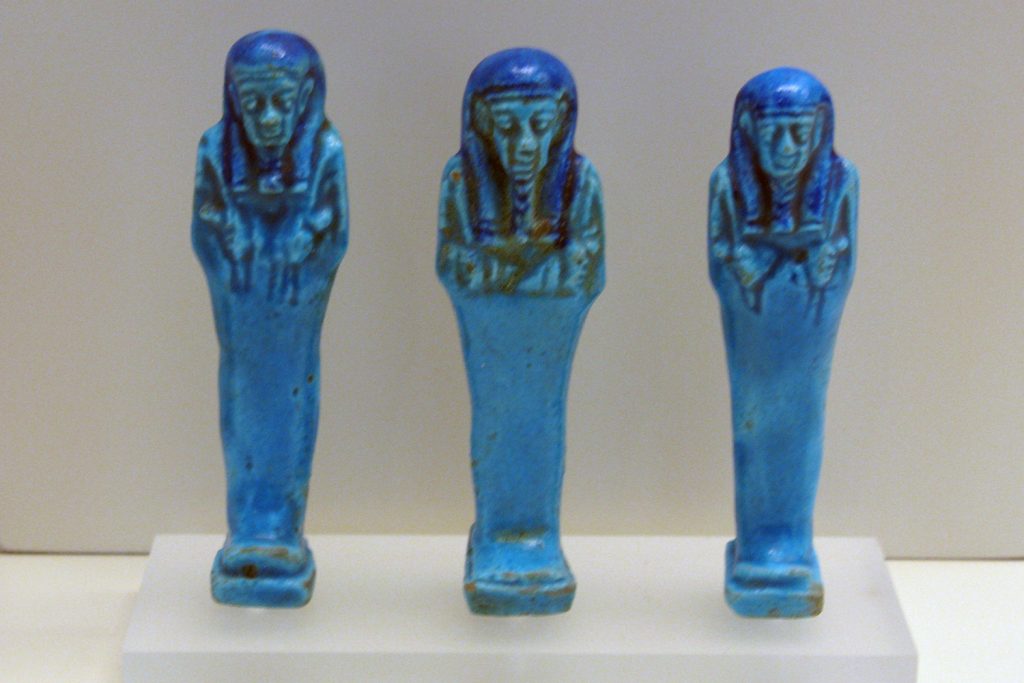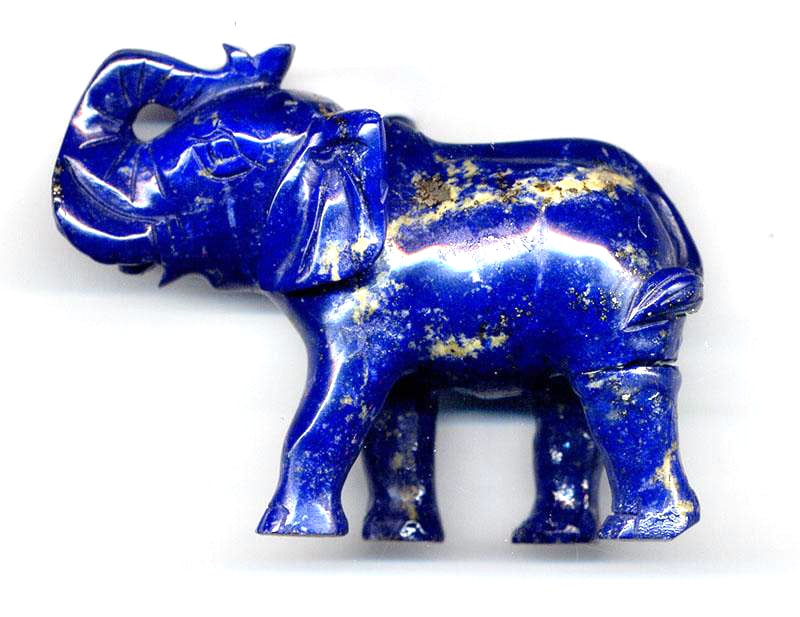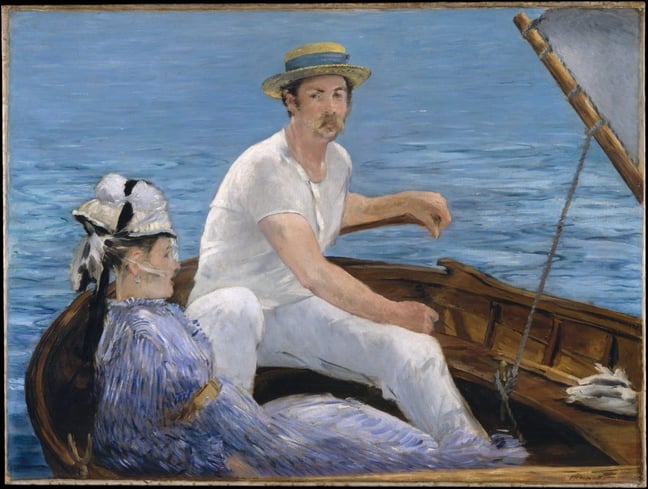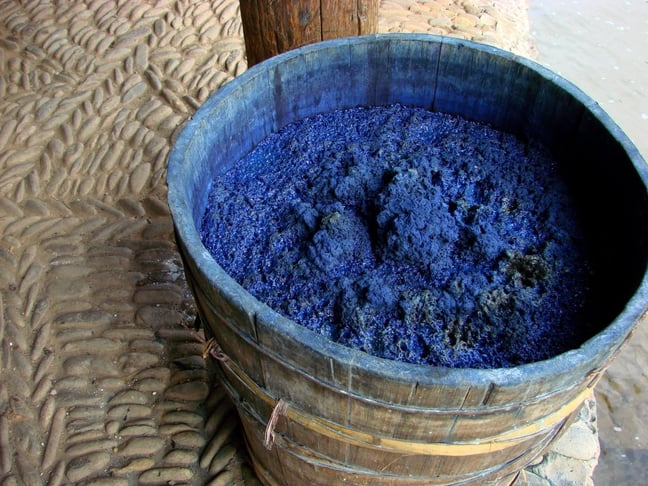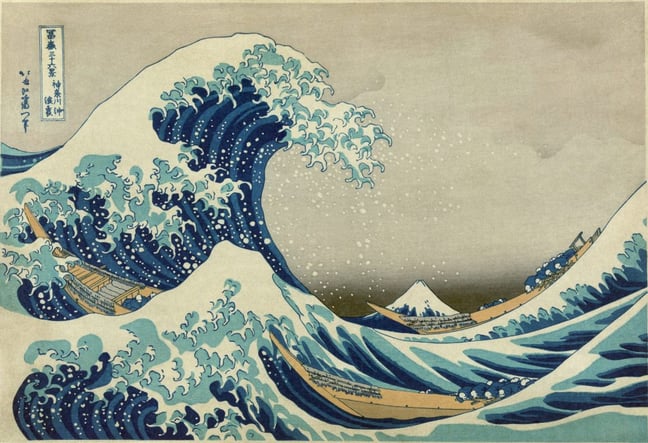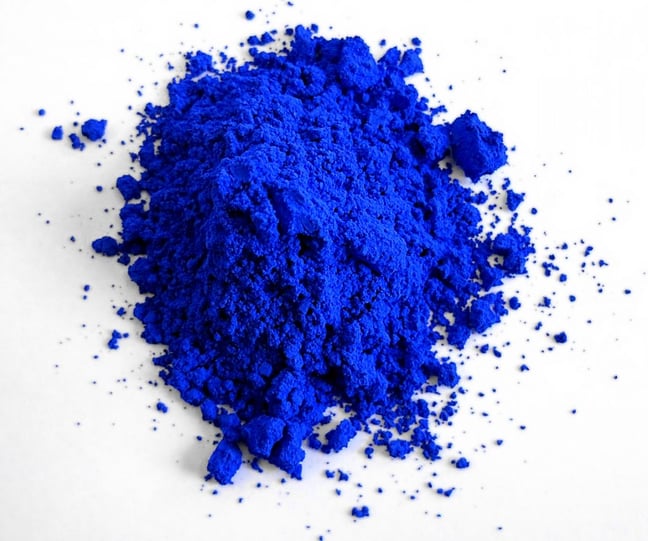Colour on our utensils, it is now so obvious. We do not think about the fact that colours have been developed in one way or another and have been applied by means of manufactured pigments. The fact that giving something a colour is not so obvious is evident from the history of the colour blue.
Blue
The colour blue is associated with two of the largest natural features of the earth: the sky and the ocean. Blue has no dimensions. It exceeds all dimensions. But that was not always the case. Some scientists believe that the earliest people were actually colour-blind and could only recognize black, white, red and only later yellow and green...! As a result, early people without an idea of the colour blue simply had no words to describe it. This is even reflected in ancient literature, such as Homer's Odyssey, written around 800 BC, which describes the ocean as a 'wine-red sea'. Is that not an interesting fact about our consciousness...
Blue was first produced by the ancient Egyptians, who found out how they could make a permanent pigment that they could apply to decorative art. The color blue continued to evolve over the next 6,000 years and certain pigments were even used by the world's greatest artists to make some of today's most famous works of art. Blue continues to evolve, with the latest pigment YInMnYInMn discovered less than ten years ago. Read on to learn more about the fascinating history of the color Blue.
Egyptian blue
There is a long list of things that thank the ancient Egyptians for inventing, and one of them is the colour blue. It is considered the first synthetically produced colour pigment ever. Egyptian blue (also known as cuprorivaite) was made around 2,200 BC. It was made of ground limestone mixed with sand and a copper-containing mineral, such as azurite or malachite, which was then heated. The result was an opaque blue glass that had to be grinded and combined with thickeners such as proteins to create paint or glaze. The Egyptians held this hue in high regard and used it to paint ceramics and statues and to decorate the tombs of the pharaohs. The colour became popular in the Roman Empire and was used until the end of the Greco-Roman period (332 BC - 395 AD), when new methods of producing pigment began to evolve.
Ultramarine
The history of ultramarine began about 6,000 years ago, when the semi-precious stone made from lapis lazuli was imported by the Egyptians from the mountains of Afghanistan. The Egyptians tried but failed to make a paint, every attempt resulted in a dull grey. Instead, they used jewellery and headdresses from the stone. Lapis lazuli, also known as 'real blue', appeared for the first time as a pigment in the 6th century and was used in Buddhist paintings in Afghanistan. It was renamed ultramarine (in Latin: ultramarinus, meaning 'beyond the sea') when the pigment was introduced in the 14th and 15th century by Italian traders in Europe. It was also called Royal Blue and was very popular with European artists. To use it you had to be very prosperous. It was considered as precious as gold.
Ultramarine was reserved for the most important tasks, such as the blue robes of the Virgin Mary in Gérard David's Virgin and Child with female saints. Johannes Vermeer, who painted Girl with a mother-of-pearl, loved the color so much, that he came into debt. It remained expensive until in 1826 a synthetic ultramarine was invented by a French chemist.
Art historians believe that Michelangelo did not finish his painting, The Entombment, because he could not afford to buy more ultramarine blue.
Kobalt blauw
Cobalt blue dates from the 8th and 9th century and was used for coloring ceramics and jewelry. This was especially the case in China, where it was used in porcelain. A purer version was later discovered by the French chemist Louis Jacques Thénard in 1802 and commercial production began in France. Painters, such as JMW Turner, Pierre-Auguste Renoir and Vincent Van Gogh, started using the new pigment as an alternative to expensive ultramarine.
 in 1999 bracht Pantone een persbericht uit waarin het cerulean werd verkondigd als de "Kleur van het Millennium" en " de tint van de toekomst.
in 1999 bracht Pantone een persbericht uit waarin het cerulean werd verkondigd als de "Kleur van het Millennium" en " de tint van de toekomst.
Cerulean Blue
In 1999 Pantone issued a press release in which the cerulean was proclaimed as the "Colour of the Millennium" and "the shade of the future. Cerulean blue is a synthetic blue pigment of cobalt magnesium stannate. Cerulean blue is very light-fast. It does not discolour when mixed with other pigments. The price is high. It was perfected by Andreas Höpfner in 1805 by roasting cobalt and tin oxides. However, the colour was not available as an artistic pigment until 1860 when it was sold by Rowney and Company under the name Cerulean.
Indigo
Although blue was expensive to use in paintings, it was much cheaper to use for dyeing textiles. In contrast to the rare lapis lazuli, "indigo" came from a crop called Indigofera tinctoria, which was produced all over the world.
The use of indigo for dyeing textiles was the most popular in England and was used to dye clothing worn by men and women from all social backgrounds. Natural indigo was replaced in 1880 when synthetic indigo was developed. This pigment is still used today to paint blue jeans!
However, in the past decade scientists have discovered that the bacterium Escherichia coli can be biologically manipulated to produce the same chemical reaction that indigo makes in plants. This method, called "bio-indigo", is likely to play a major role in the production of environmentally friendly denim in the future.
Pruisisch blauw
Also known as Berlin Blue, was accidentally discovered by the German Johann Jacob Diesbach. Diesbach actually worked on creating a new red, but one of his materials - potash - had come into contact with animal blood. Instead of making the pigment even more red as you would expect, the animal blood created a surprising chemical reaction, which resulted in a lively blue.
Pablo Picasso used the Prussian blue pigment exclusively during his Blue Period, and Japanese woodblock artist Katsushika Hokusai used it to make his iconic The Great Wave of Kanagawa, as well as other prints in his six faces on Mount Fuji series. However, the pigment was not only used for making masterpieces. In 1842, the English astronomer Sir John Herschel discovered that Prussian blue had a unique sensitivity to light and that the perfect shade was to make copies of drawings. This discovery proved invaluable for architects, who could make copies of their plans and designs, known today as cyanotype or 'blueprints'. This technique for making copies of designs was still used until about 1960.
A new colour: YInMnYInMn Blue
The last discovery of blue pigments was in 2009. Then a new shade of blue was discovered by Professor Mas Subramanian and his then student Andrew E. Smith at Oregon State University. In exploring new materials for electronics, Smith discovered that one of his samples turned bright blue when heated. With the name YInMn blue, after the chemical composition of yttrium, indium and manganese, they have released the pigment in June 2016 for commercial use.
 English
English Nederlands
Nederlands Deutsch
Deutsch Belgium
Belgium Français
Français Español
Español